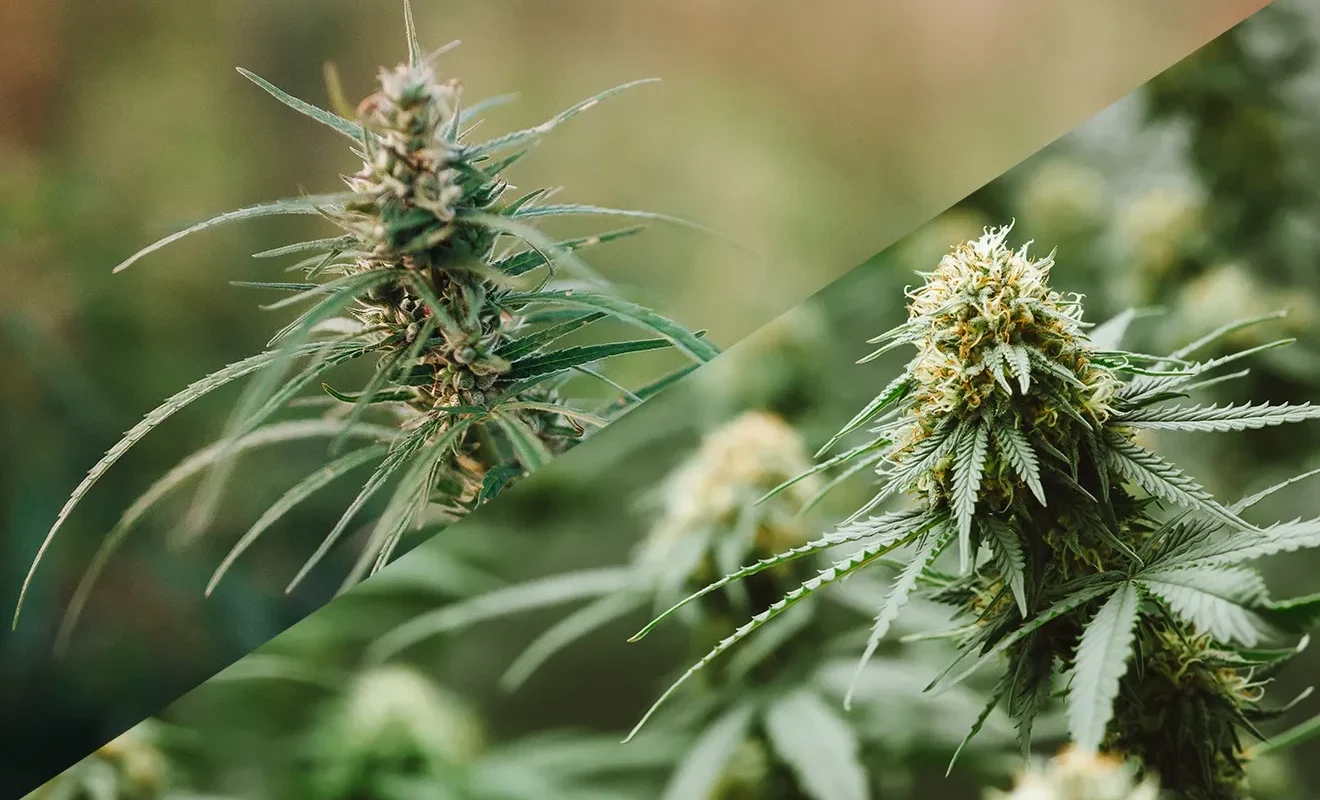When it comes to exploring the world of cannabis, you’re in for a captivating journey filled with a multitude of strains, each offering a unique and distinctive experience. At the heart of this diverse landscape lie two primary varieties of the cannabis plant: indica and sativa.
Although they belong to the same species, Cannabis sativa L., they exhibit striking differences in their appearance, effects, and origins.
In this comprehensive guide, we will delve deeper into the world of cannabis, providing you with a thorough understanding of the origins, characteristics, and effects of indica vs sativa strains, as well as their historical significance and how hybridization has shaped the cannabis landscape.
Page Contents
Origins and History: A Journey Through Time
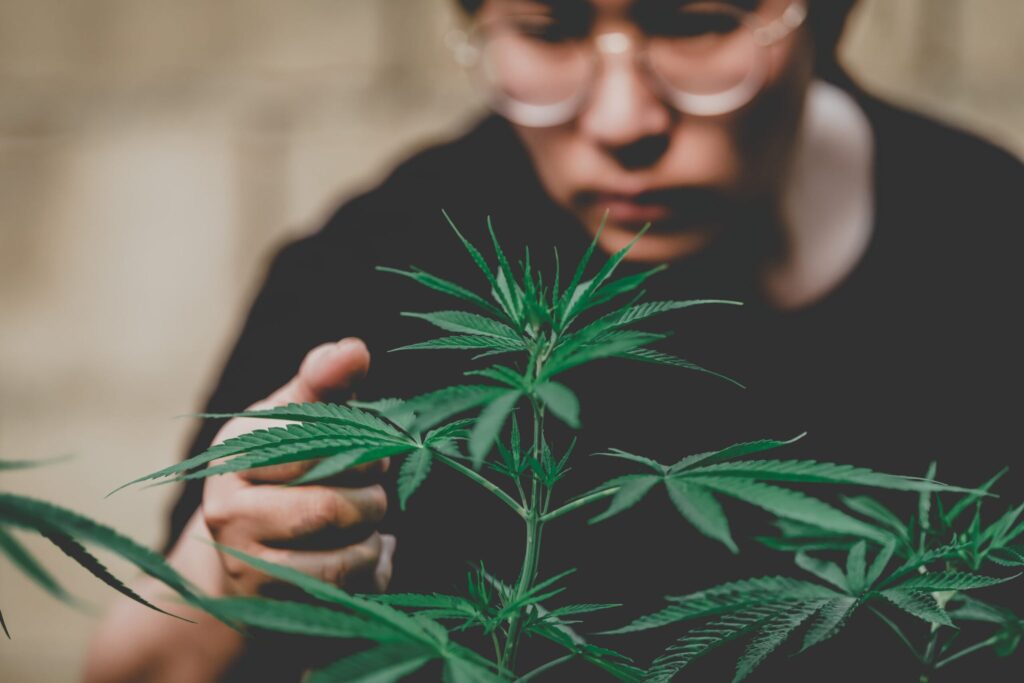
To truly appreciate the nuances of cannabis, it’s essential to understand its origins and historical significance. The cannabis plant has a rich history that spans thousands of years and has played diverse roles in different cultures and regions.
- Indica: Indigenous to the Indian subcontinent, Cannabis indica has been cultivated for millennia in this region. It holds a prominent place in the history of the Indian subcontinent, where it has been used for religious rituals, traditional medicine, and the production of textiles. Its short, bushy stature and resilient nature make it well-suited for the Indian climate.
- Sativa: In contrast, Cannabis sativa has its origins in Europe and Western Asia. Historically, it was prized for its fibrous qualities and was utilized in the creation of rope, clothing, and various other goods. Sativa plants are characterized by their tall, slender stature and narrow leaves, making them adaptable to the climates of Europe and the Middle East.
Both indica and sativa strains have a rich history and have been cultivated for centuries. However, it wasn’t until the 18th century that they embarked on their global journey, spreading to different parts of the world.
The formal classification of indica and sativa as separate species occurred in the mid-19th century. Today, the vast majority of cannabis strains are hybrids, carefully bred to emphasize specific traits such as higher THC levels, improved yields, or appealing aromas.
Cannabinoid Profiles: Unveiling the Chemical Distinctions
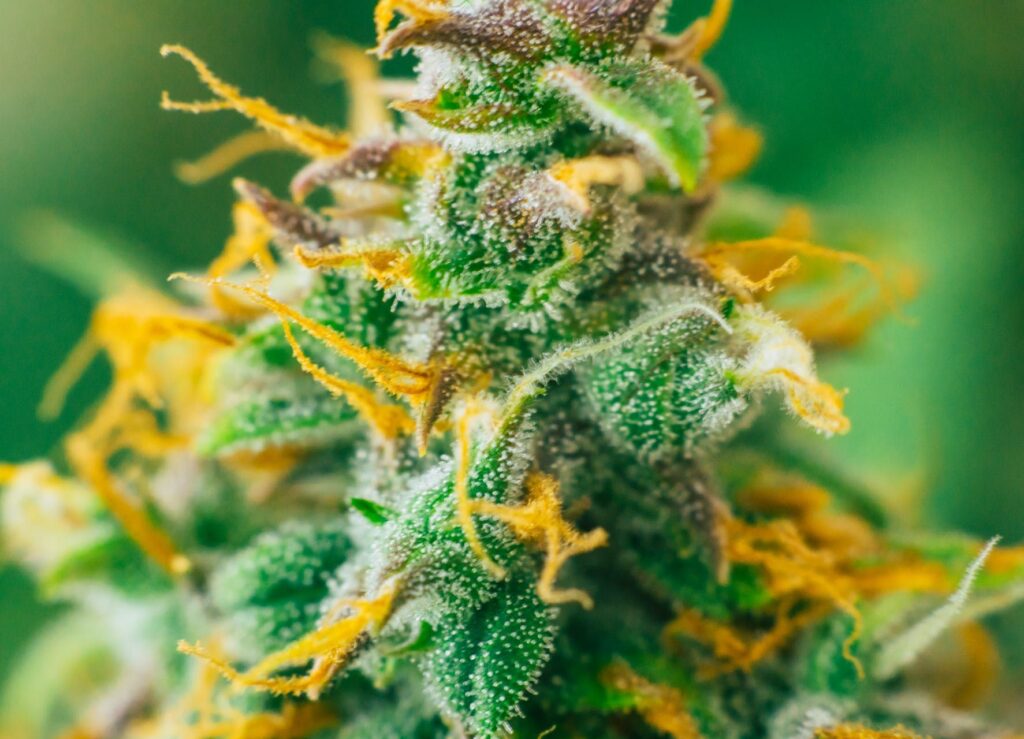
One of the most critical factors differentiating indica from sativa strains lies in their cannabinoid profiles. Cannabinoids are the chemical compounds within cannabis responsible for its various effects. Here’s a comprehensive breakdown of how these two strains differ in their cannabinoid content:
- Sativa: Sativa strains generally contain higher levels of THC (delta-9-tetrahydrocannabinol), the primary psychoactive compound in cannabis. This abundance of THC is responsible for the characteristic energizing and uplifting high that sativa strains are known for. However, it’s important to note that sativa strains can also have significant CBD (cannabidiol) content, the non-psychoactive compound with potential therapeutic benefits.
- Indica: In contrast, indica strains typically contain more CBD and less THC. This composition leads to the relaxing and sedating effects associated with indica strains. They are often referred to as the go-to choice for those seeking relief from pain, anxiety, or insomnia.
In the realm of cannabis, the indica vs. sativa distinction primarily revolves around the plant’s geographic origins and cannabinoid profiles.
However, the landscape of cannabis is evolving rapidly as breeders focus on developing highly customized hybrids with specific effects and balanced cannabinoid levels. This innovation promises an exciting future for cannabis enthusiasts looking for tailored experiences.
Usage and Effects: Navigating the Indica vs. Sativa Experience

Understanding the differences between indica and sativa strains is crucial for making informed choices regarding your cannabis consumption. These differences encompass aspects such as growth patterns, appearance, and, most importantly, the effects they produce.
Growth and Appearance
- Indica: Indica plants are characterized by their short, bushy stature with wide leaves. They are well-suited for indoor cultivation due to their compact size. Indica strains generally have a shorter flowering period, typically ranging from 6 to 8 weeks. This rapid growth cycle makes them a preferred choice for many cultivators.
- Sativa: Sativa plants, in contrast, are tall and slender with narrow leaves. They thrive in outdoor environments with ample space to grow vertically. Sativa strains have a longer flowering period, typically spanning from 10 to 16 weeks. This extended growth cycle demands patience from cultivators but can result in larger yields.
Effects
- Indica: Indica strains are renowned for their ability to induce a heavy, sedating body high. They often lead to a sensation known as “couch lock,” where users feel deeply relaxed and sometimes lethargic. Due to these relaxing effects, indica strains are typically favored for evening or nighttime use. They are excellent choices for individuals seeking relief from physical pain, muscle tension, or insomnia.
- Sativa: Sativa strains produce an energizing, uplifting cerebral high. They tend to stimulate creativity, focus, and sociability. Users often report feeling more motivated and alert after consuming sativa strains. These effects make sativa strains an ideal choice for daytime use, whether you’re looking to enhance your mood, engage in creative pursuits, or simply enjoy an active social experience.
Hybridization and Blurred Lines
It’s important to note that many modern cannabis strains are hybrids that blur the lines between indica and sativa effects. These hybrids are carefully crafted to combine the best of both worlds, offering a diverse range of experiences to suit individual preferences.
Historical Significance: Cannabis Through the Ages

Cannabis has played a pivotal role in various cultures throughout history. From its early use in religious ceremonies to its role in traditional medicine, this versatile plant has left an indelible mark on human civilization.
In ancient India, where Cannabis indica originated, the plant held significant religious and medicinal importance. It was used in rituals dedicated to the god Shiva and was believed to possess divine properties.
Additionally, it found its place in traditional Ayurvedic medicine, where it was utilized to treat a wide range of ailments. In Europe and Western Asia, where Cannabis sativa thrived, the plant’s fibrous qualities were highly valued.
Hemp, derived from sativa strains, was used to create essential commodities like rope, clothing, and paper. The durability and versatility of hemp made it a valuable resource in these regions.
The Evolving Cannabis Landscape: Hybrids and Beyond
As cannabis continues to gain mainstream acceptance and legality, breeders and cultivators are pushing the boundaries of what this plant can offer. Hybridization, the deliberate crossbreeding of indica and sativa strains, has resulted in a multitude of new varieties that challenge traditional categorizations.
These hybrids are bred for specific purposes and effects, giving consumers a wide range of options to choose from. For example, a strain may be indica-dominant but possess higher-than-average THC levels, offering a relaxing yet euphoric experience.
Conversely, a sativa-dominant hybrid might provide an energetic and creative high while maintaining a certain level of relaxation.
Furthermore, the development of strains with balanced THC and CBD ratios has opened up new possibilities for both medical and recreational users. CBD, known for its potential therapeutic benefits, can help mitigate the psychoactive effects of THC, allowing for a more controlled and balanced experience.
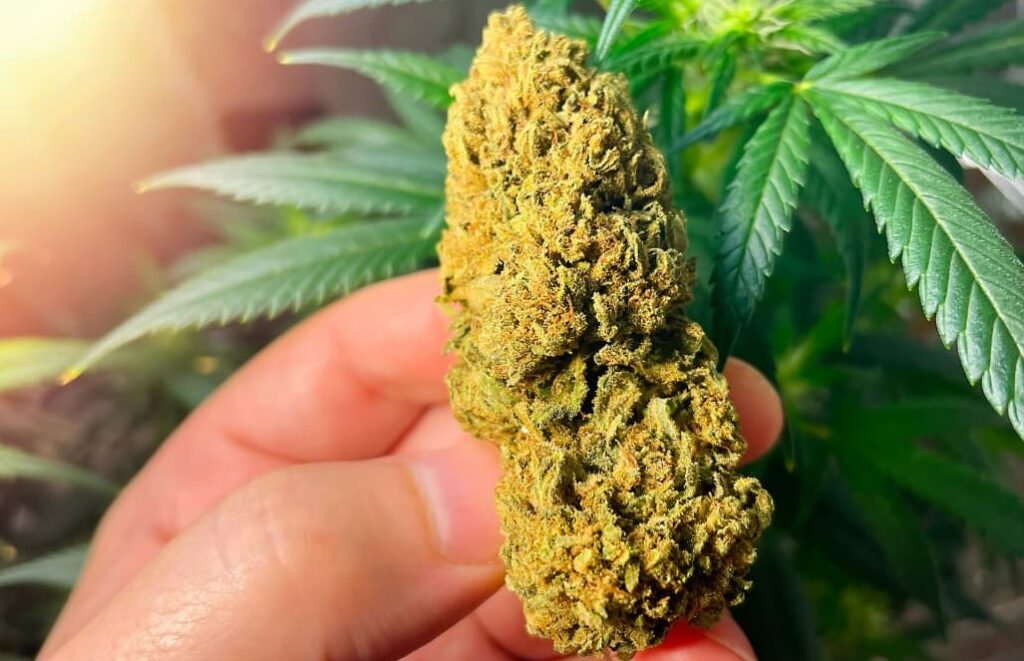
The Future of Cannabis: Customization and Personalization
The future of cannabis seems to be heading towards highly customized and personalized experiences. As the industry matures, consumers are increasingly seeking strains that cater to their individual needs and preferences.
Breeders are working diligently to create strains with specific effects, flavors, and cannabinoid profiles. Whether you’re looking for pain relief, enhanced creativity, stress reduction, or a combination of these benefits, there is likely a cannabis strain tailored to your requirements.
Moreover, the rise of legal cannabis markets has led to greater transparency and information sharing. Consumers now have access to detailed information about the strains they are purchasing, including their cannabinoid content, terpene profiles, and genetic lineage.
This empowers individuals to make informed decisions about their cannabis consumption and tailor their experiences accordingly.
Conclusion: Your Cannabis Journey Awaits
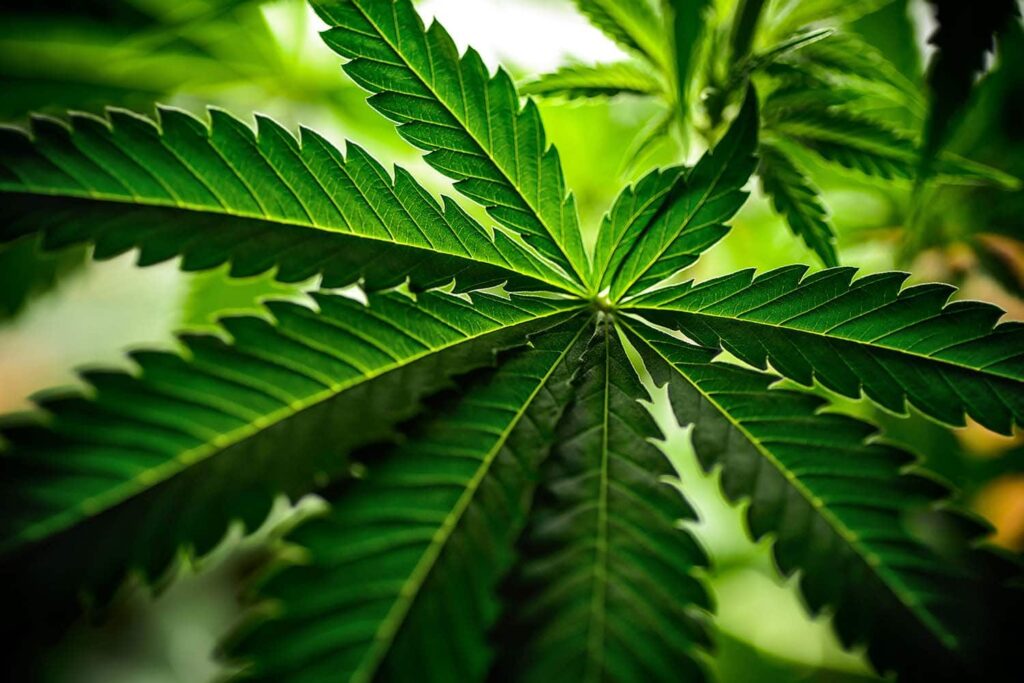
In conclusion, the world of cannabis is a vast and exciting one, with indica and sativa strains serving as the foundational pillars of this diverse plant.
As you embark on your cannabis journey, consider your personal preferences, desired effects, and the occasion for consumption when choosing between these two distinct varieties.
Whether you’re seeking relaxation and pain relief with indica or looking to boost creativity and energy with sativa, there’s a perfect strain waiting to enhance your cannabis experience.
Welcome to the fascinating world of cannabis, where discovery and exploration are boundless, and the possibilities are endless. Enjoy your journey responsibly, and remember that knowledge is your best companion in this captivating realm of nature’s wonders.
